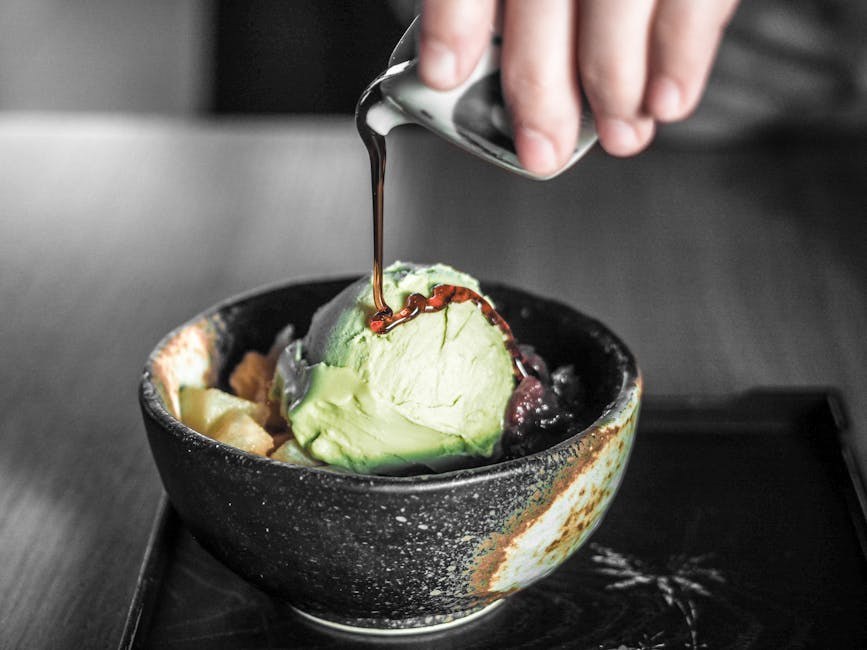First dates can feel like tightrope walks – exciting, a little dizzying, and full of tiny choices that determine whether you glide forward or wobble. When two people are still learning how to read each other, awkward silences can slip in and stretch seconds into small eternities. That hush doesn’t mean the connection is doomed; it usually means both of you are thinking hard about what’s safe, kind, or interesting to say. With a few simple habits, you can keep things warm, curious, and natural, turning awkward silences into comfortable pauses that make space for the next spark.
Why quiet moments feel louder on a date
In everyday life, we all encounter lulls – in elevators, at work, in line for coffee. On a date, though, the stakes feel higher and the room seems to shrink. Self-conscious thoughts pile up – awkward silences grow when you’re measuring each sentence against imaginary standards. The trick is not to fear the lull but to prepare for it. If you understand common conversation traps and have a few reliable pivots ready, you’ll shift from tense gaps to relaxed rhythm, even when the topic wanders or stalls.
How to keep momentum without sounding rehearsed
A good date chat is part curiosity, part play – and completely human. You don’t need a flawless script to avoid awkward silences. What you need is a mindset: be present, choose gentle topics early on, and offer small stories that invite your date to respond. The following ideas build on ordinary situations you already know, giving you a flexible toolkit to keep conversation buoyant. Use them in any order, revisit them when the energy dips, and let them guide you back from awkward silences to easy flow.

-
Steer clear of hot-button debates – at least at first
There’s a time and place for passionate opinions, but the opening rounds of getting to know someone work best on neutral ground. A fierce stance on politics, polarizing social issues, or money can pull focus away from who you are as people and push you toward point-scoring. Early defensiveness breeds awkward silences, because one person starts calculating every word while the other braces for impact.
If a touchy topic pops up, acknowledge it with warmth – “That’s a big one; we might need a whole evening for it” – and pivot to something lighter that still connects: a shared interest, a recent film, or a low-stakes question about taste. This gentle redirect lowers the temperature and prevents awkward silences from hardening into distance.
-
Let the past rest until trust arrives
It’s natural to wonder about someone’s history, yet probing for breakup details or family conflicts can make a first meeting heavy. When the conversation tilts toward old wounds, people clam up, and awkward silences creep in to guard tender places. Early vulnerability can be sweet, but it should be volunteered, not extracted.

If the topic drifts to former relationships or rough chapters, you can guide it toward bright spots: what you learned, what you enjoy now, or small anecdotes that show resilience. Keep the tone hopeful. This approach honors the past without getting stuck there, and it keeps awkward silences from clouding new possibilities.
-
Name the lull with humor – then switch lanes
Honesty, used kindly, is a charm. If a hush stretches, a light comment can reset the vibe: “We just unlocked expert-level quiet – should we try the bonus round?” A wink like that breaks tension, turns awkward silences into shared jokes, and gives you permission to introduce a fresh thread.
Follow your quip with something unrelated – a small observation about the room, a curious question about their taste in music, or a playful “two things I’m terrible at and one I’m weirdly good at.” By acknowledging the moment and moving on, you sidestep the weight of awkward silences and restore momentum.

-
Invite stories about siblings and close friends
People tend to relax when talking about their inner circle. Ask about a sibling’s quirky talent or a friend they’ve known since school. These are safe, lively topics that open doors to character, values, and humor – all without veering into interrogation. Better yet, they naturally branch: one story leads to another, and those branches keep awkward silences from taking root.
Share your own snippets, too – the cousin who runs retro-themed birthday parties or the roommate adventure that went sideways and then became a family legend. When both of you swap lighthearted snapshots of your lives, the conversation grows textured and resilient, and awkward silences fade into the background.
-
Explore travel – near, far, and in-between
Travel sparks imagination, whether it’s an overseas trek or a day trip to a nearby town. Ask about places that left a mark: a beach with wild winds, a city that felt like a movie set, a small café with the best bread on earth. Even someone who hasn’t traveled much will have local corners they adore. These questions invite sensory details – tastes, smells, sounds – that keep talk colorful and ward off awkward silences.
Offer your own slices: a memorable street snack, a sunrise you almost missed, a map mishap that turned into a great story. Specifics help – not statistics, just moments. The more vivid the picture, the less room there is for awkward silences to slip in.
-
Ask about wins, projects, and proud moments
Most people glow when they describe something they’ve built, learned, or overcome. Invite that glow. Ask what they’re tinkering with – a class, a recipe, a weekend build – or what felt like a recent win. Achievements don’t have to be grand; pride can live in a perfect risotto or a half-marathon finished in the rain. When someone lights up, the conversation feeds itself and starves awkward silences.
If careers feel heavy, keep it playful: “What’s a skill you’ve picked up that your younger self would never have predicted?” Answers to that kind of question tumble into stories, and stories crowd out awkward silences with enthusiasm.
-
Swap weekend rhythms and small rituals
Weekend talk is neutral yet revealing. Do they recharge with books, brunch, the gym, or spontaneous road trips? Do they hunt for new coffee spots or master a garden patch? These snapshots of ordinary joy invite easy follow-ups and help you spot shared interests for future plans. Because the stakes are low and the terrain familiar, the chat feels breezy – exactly the tone that keeps awkward silences from settling in.
Offer a piece of your own routine, then ask a curious question: “I’ve been learning to make fresh pasta – what’s the comfort meal you’d choose after a long week?” The rhythm becomes call-and-response, and awkward silences lose their footing.
-
Do something together to reset the energy
Conversation doesn’t have to carry the entire evening. A shared activity relaxes nerves and creates natural topics. If you’re already at a bar or restaurant with music, suggest a quick dance. If you’re strolling, grab ice cream, browse a bookstore, or play a simple word game. Joint attention gives you both relief from self-monitoring – the invisible pressure that magnifies awkward silences.
Let the surroundings inspire you: comment on a street mural, compare favorite flavors, or guess the backstory of a funny pet name on a coffee cup. As you engage the world side by side, awkward silences transform into companionable quiet – the kind that says you’re comfortable sharing space.
Micro-skills that make everything smoother
Beyond topics, a handful of subtle habits can turn a shy exchange into a warm one. Think of them as conversation posture – the way you carry yourself in words. They’re small, but they prevent awkward silences from swelling while making your curiosity feel genuine rather than strategic.
-
Use open questions that invite stories
“What surprised you about…?” or “How did you get into…?” nudges people to share experiences rather than deliver one-word answers. When answers get bigger, the air gets friendlier, and awkward silences shrink.
-
Offer a slice, then pass the ball
Balance matters. Share a quick anecdote – then turn it outward: “What about you?” That gentle toss keeps the dialogue looping and stops awkward silences from forming behind monologues.
-
Match their pace and energy
Some people think best with pauses; others riff quickly. If you mirror tempo – without imitating – you help them relax. Comfort rises, awkward silences recede.
-
Let a little silence breathe
Not every quiet beat is a problem. When you resist the urge to fill every second, your date can gather thoughts and bring something thoughtful to the table. That reframes awkward silences into thoughtful pauses – a subtle but powerful shift.
Gentle pivots when the topic stalls
Even with the best intentions, some threads go nowhere. You ask about a show they haven’t seen, or a hobby that doesn’t click. No problem. Keep a few pivot bridges handy – short, friendly transitions that route you elsewhere without calling attention to the stall. Phrases like “That reminds me of…” or “Speaking of weekends…” give you a graceful lane change. Use a small observation to relaunch: the music’s vibe, the lighting, the waiter’s impeccable memory. Each pivot is a stitch that closes up awkward silences before they widen.
What to do if nerves take over
Sometimes the body speaks first – sweaty palms, racing thoughts, a sudden blank screen. When anxiety climbs, awkward silences multiply. Try a quick reset: a slow breath while you glance around the room; a sip of water; a simple grounding thought like, “I’m here to learn about one person, not pass a test.” Ask an easy question you’ve already prepared, then listen fully to the answer. Presence is the antidote to spirals, and presence keeps awkward silences from running the show.
Listening that shows you care
Engaged listening – nods, brief affirmations, and eye contact – signals that you value what’s being shared. Paraphrasing a detail (“So your nephew’s first birthday had a retro theme?”) proves you’re tracking. This kind of attention creates warmth that repels awkward silences. It also invites reciprocity; when people feel heard, they tend to ask back, and the conversation becomes a loop rather than a line.
When the chemistry just isn’t there
It’s worth remembering – not every pairing clicks, even with excellent conversation skills. If you’ve tried light topics, gentle humor, and small activities yet awkward silences keep returning heavier each time, it might simply be a mismatch. That’s okay. You can still be gracious, wrap up kindly, and leave the door open for friendship or wish each other well. The goal isn’t to force fireworks; it’s to find mutual ease. When it exists, these tools amplify it. When it doesn’t, these tools help you recognize it without self-blame or awkwardness.
Putting it all together on your next date
Before you head out, pick two or three areas that feel natural to you – siblings and friends, travel memories, weekend rituals – and jot down a couple of small stories. Think of a kind, funny line to name a lull if it shows up. Decide on a tiny activity you could suggest if the energy needs a reset. That’s your ready kit. With it, you’ll greet awkward silences like passing weather instead of looming storms, and you’ll give the connection a fair chance to grow.
And if a hush arrives anyway, breathe. Ask a soft question. Share a short, vivid moment from your life. Smile. Most first dates are two people trying their best – and when you lead with warmth and curiosity, awkward silences don’t stand a chance.